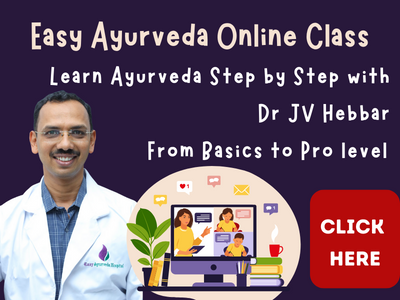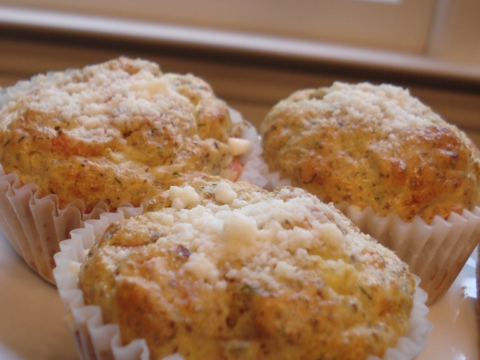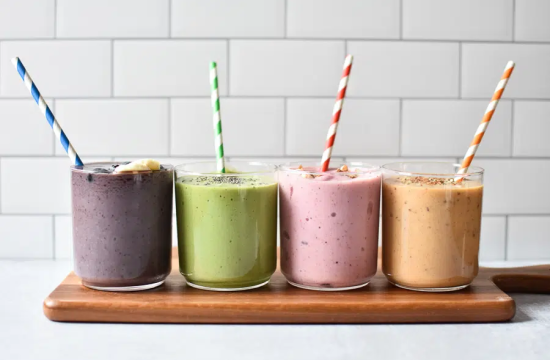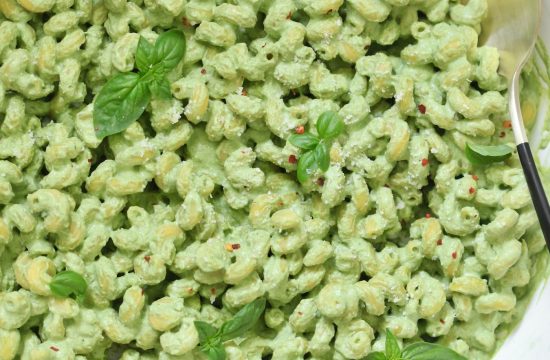Article by Dr Raghuram Y.S. MD (Ay) & Dr Manasa S, B.A.M.S
Dysautonomia is a complex disorder affecting the Autonomic Nervous System (ANS). This system regulates body functions like blood pressure, heart rate, body temperature and digestion. These processes can become erratic and dysfunctional when one has dysautonomia. This will lead to a wide array of disruptive symptoms like chest pain, fainting, mood swings, fatigue and dizziness.
Related Reading – Dysautonomia
Dysautonomia – Ayurveda Understanding
Almost all functions of the autonomous nervous system are those of Vata and its subtypes. We know that all types of vata would have influence on each other, in states of balance as well as imbalance. The symptoms pertaining to Dysautonomia are due to severe imbalances of vata.
Initially the disturbance may start at the level of Prana Vata i.e. head, the seat of brain and central nervous system and in later stages of the disease, the other vata subtypes too will become erratic, dysfunctional and imbalanced.
Though pitta and kapha may get involved in the process, most functions regulated by ANS appear like being carried out by sane vata with helping hands from the other doshas. Blood pressure, heart rate, body temperature and digestion – all these functions are carried out by vata.
Since secondary dysautonomia is caused by autoimmune conditions like GB Syndrome, Rheumatoid Arthritis, Sjogren’s Syndrome and SLE, we can consider the below mentioned conditions from Ayurveda perspective –
– Amavata
– Sandhigata vata
– Mamsagata vata
– Vatarakta
Even in these conditions, vata is a major component in pathogenesis.
In such conditions, dysautonomia and its symptoms will be anubandha i.e. secondary to these pradhana vyadhis i.e. main diseases. The line of treatment also will be in accordance with the mentioned conditions. For this, we need to establish a cause and effect relationship between these autoimmune conditions and dysautonomia.
Modern medicine associates dysautonomia with neurodegenerative conditions like Parkinsons’ Disease and Multiple Sclerosis, which are also Vata predominant conditions from Ayurveda perspective.
Likewise, metabolic disorders which are causal of dysautonomia can be considered as diseases caused due to imbalance of samana vata.
Traumatic injuries which are the other important cause for Dysautonomia also aggravates vata and also rakta. They in turn can cause symptoms similar to dysautonomia.
Lack of essential nutrients in the diet is seen to cause dysautonomia. Nutritional deficiency will also cause an increase in vata.
Likewise, Ayurveda also has described that excessive consumption of madya – alcohol would severely aggravate all the doshas, mainly vata. It would have a multi-system impact. Madya is said to be similar to visha – poison. Modern medicine has counted substance use disorders amongst the causes of dysautonomia.
From the perspective of types of Dysautonomia
Even when we see through the types of Dysautonomia, we get a big picture of involvement of vata in the causation of these types. Example – Postural Orthostatic Tachycardia Syndrome – POTS – presents with orthostatic intolerance leading to rapid increase in heart rate – hrddrava and light headedness – bhrama, which are symptoms of kapha decrease. When kapha decreases, vata would obviously increase. They are also the symptoms of vata increase.
Similarly, the involvement of vata in other kinds of Dysautonomia shall be understood.
| Type of Dysautonomia | Symptoms | Dosha involved and related conditions |
| Orthostatic Hypotension | Low blood pressures on standing, due to change in positions | Vata Kshaya |
| Vasovagal syncope | Fainting due to stress or phobia | Vata
Murcha |
| Familial Dysautonomia | issues with breathing, swallowing, and blood pressure regulation | Vata – Prana, Udana and Vyana |
| Pure Autonomic Failure (PAF)
|
It is a neurodegenerative disorder, characterized by orthostatic hypotension, sleep disorders, and bladder issues.
May progress to Parkinson’s disease or other neurodegenerative conditions. |
Vata –
Vyana, Apana, Prana. Kampavata. |
| Multiple System Atrophy – MSA | Tremors, fainting, and coordination problems.
It usually develops in adults over 50 and progresses rapidly. |
Vata
Kampavata Murcha |
| Inappropriate Sinus Tachycardia (IST) | Elevated resting heart rate, leading to palpitations and dizziness. | Vata Vriddhi
Kapha Kshaya Bhrama |
| Autoimmune Autonomic Ganglionopathy (AAG) | Orthostatic hypotension, dry mouth, and urinary issues. | Vata |
| Baroreflex Failure | Severe blood pressure fluctuations and heart rate changes in response to physical or emotional stress, headaches and unexplained sweating. | Vata Vriddhi,
Vyana Vata, |
| Hereditary Sensory and Autonomic Neuropathy (HSAN) | Altered pain perception and hearing problems.
|
Vata Vriddhi |
| Autonomic Dysreflexia | Life-threatening condition
Caused due to overreaction of the autonomic nervous system, often due to spinal cord injuries. Symptoms – hypertension, severe headaches, and visual disturbances. |
Vata Vriddhi
Vyana Vata Vataja Shirashula Rasagata Vata |
| Diabetic Autonomic Neuropathy
|
Affects the cardiovascular, gastrointestinal, and urinary systems, causing complications like diarrhoea and erectile dysfunction. | Vata Vriddhi
Vataja Prameha / Madhhumeha
|
| Congenital Central Hypoventilation Syndrome (CCHS) | Shallow breathing,
developmental problems |
Vata Vriddhi
Pranavaha Sroto Dushti Shwasa Rasavaha Sroto Dushti |
| Paroxysmal Sympathetic Hyperactivity (PSH)
|
Caused by traumatic brain injury,
Symptoms – increased heart rate, blood pressure, and body temperature. |
Vata,
Vyana Vata Rasagata Vata |
| Postprandial Hypotension
|
This condition involves a drop in blood pressure after eating, leading to dizziness and weakness. | Vata Kshaya,
Annavrita Vata |
From the perspective of symptoms of Dysautonomia
Looking from the symptoms, perspective, again we get a picture of involvement of vata. It is not that the other doshas are not involved, they are, but at a later stage. We can consider vata to initiate the disease process and pita, kapha and rakta are involved in later stages of the disease.
There are many symptoms of dysautonomia. Since the autonomous system controls many systems and their functions in the body, the symptoms follow the system or systems involved in the pathogenesis of the disease. They should be considered as below said.
| System involved in Dysautonomia | Important Symptoms | Ayurveda perspective |
| Respiratory System | Breathing difficulty | Pranavaha Sroto Dushti (janya roga)
Shwasa, Kasa, Hrdroga |
| Cardiovascular System | Increased heart rate, anxiety, palpitations or slow heart rate | Rasavaha / Pranavaha Sroto Dushti (janya roga), Rasapradoshaja Roga,
Hrdroga, Shwasa |
| Circulatory System | Difficulty standing still, dizziness after standing, erectile dysfunction, fainting, balance issues, difficulty exercising, fatigue, pale skin, vertigo, weakness | Rasavaha / Pranavaha Sroto Dushti and Janya Rogas,
Prana, Vyana and Apana Vayu dushti |
| Excretory | Difficulty in defecation and urination, incontinence, dehydration | Purishavaha / Mutravaha Sroto Dushti & Janya Rogas
Apana Vata Vaigunya |
| Cognition / Central Nervous System | Forgetfulness
Difficulty in focusing Brain fog Migraine Insomnia Mood swings |
Manovaha Sroto Dushti / Janya Lakshanas
Prana Vayu and Udana Vata Vaigunya |
| Sensory system | Blurred vision
Sensitivity to light Sensitivity to sound |
Indriya Pradoshaja Roga |
Here we can see that dysautonomia would affect multiple systems and would produce related symptoms. From an Ayurveda perspective, it is Vata dushti / prakopa at various levels, systems and functions. Many srotas and mulas including Pranavhaha, Rasavaha, Purishavaha, Mutravaha and Manovaha Srotas are affected and so are different subtypes of vata and their functions.
From the perspective of complications of Dysautonomia
Complications related to heart including abnormalities of heart rate like tachycardia, bradycardia, arrhythmia etc leading to additional complications such as chest pain, dizziness, heart attack or stroke are due to hyperactivity of vata, mainly udana vata. It also reflects the imbalance in the coordination with respect to the Prana-Udana-Vyana axis. Rasa and Pranavaha Srotas are afflicted in these conditions.
Recurrent fainting and breathing difficulties like shortness or breath, rapid breathing or difficulty in catching one’s breath leading to conditions like hypoxia which can further cause damage to vital organs and tissues point towards similar symptoms explained in the context of pranavaha sroto dushti – affliction of channels carrying air or life element or damage to the same. Prana Vayu and Udana Vayu are afflicted in such pathology and so is Rasavaha srotas.
Similarly, digestive complications arising in this condition like constipation, diarrhoea, gastroparesis are all caused by vata imbalance – such symptoms may also be seen in shokaja or bhayaja atisara, udavarta, gulma and other conditions caused by vata.
Management of Dysautonomia
Nidana Parivarjana
All vata aggravating causes including foods, activities, behaviours and practices should be kept away. One should keep away from stress and substance abuse.
Yukti Vyapashraya Chikitsa
Vata / Vata Vyadhi Chikitsa – As we have seen that Dysautonomia presents with symptoms and patterns of ‘vata imbalance’ or ‘vata vyadhi’, it shall be treated as Vata Vyadhi. The line of treatment of vata vyadhi shall be followed including therapies, dietetic, lifestyle and behavioural corrections focussed towards balancing vata.
A wise physician should also look out for subtypes or subtypes of vata involved in the pathogenesis and address the case accordingly. The systemic symptoms are clues to decide the vata subtype involved in the disease.
Below mentioned therapies are gamechangers in the treatment of Dysautonomia –
– Vasti
– Virechana
– Nasya
– Snehapana / Nitya Snehana
– Murdni Taila
– Abhyanga & Swedana
– Taila / ksheera / takra dhara – shiro, sarvanga
Herbs, medicines and formulations should be designed in accordance with the systemic symptoms and complications. Else medicines helpful in combating vata will be handy as an initial approach.
Example –
If respiratory symptoms are predominant in Dysautonomia, Shwasa Chikitsa or treatment for Pranavaha, Manovaha and Rasavaha Sroto Dushti may be adopted. Measures to balance vata flow like Pranayama, meditation, destressing activities, and murdni taila procedures can be brought into play. Formulations to strengthen the respiratory and circulatory system should be included. Medicines shall be in taila or ghrta base if vata symptoms are predominant.
If there are symptoms of the central nervous system or those pertaining to cognition, the Medhya dravyas – brain tonics shall be used. Ghrtas mentioned in the context of Unmada and Apasmara like Brahmi Ghrta, Kalyanaka Ghrta, Paishachika Ghrta, Saraswatha Ghrta etc should be used. External therapies like Murdni Taila, Abhyanga etc and Psychotherapy will be helpful, along with practice of Pranayama, Yoga, meditation etc. Daiva Vyapashraya Chikitsa too shall be resorted to.
Rasayanas should be brought into the picture as and when needed.
Sattvavajaya and Daiva Vyapashraya Chikitsa
Psychiatric counselling and Psychotherapies should be included in the treatment of Dysautonomia. This will help in comprehensive mind healing and will also bring back to balance the imbalances occurring in the central nervous system and endocrine system. Dhee – mind-intellect training, Dhairya – psychotherapy, counselling and Atmadi Vijnana – realization therapies are the mainstays to heal the mind.
Divine therapies and belief therapies which are non-medicinal but highly effective shall be included in the treatment of Dysautonomia. They will not only help in comprehensive psychosomatic healing but will also instill positiveness in the minds of the patients.
Other treatment principles to consider
In secondary Dysautonomia – Dysautonomia can be caused secondary to some other disease or longstanding illness. Treatment should be initiated for the pradhana vyadhi i.e. disease-causing symptoms of Dysautonomia. This will be the root treatment for the mentioned condition.
The srotas involved too should be identified with the help of classical explanation of ‘sroto dushti lakshanas’. Treatment principles of the related sroto dushti in accordance to the predominant symptoms manifested should be adopted.
Treatment should be done on the principles of treating the below mentioned conditions if they are causal for dysautonomia –
– Amavata
– Sandhigata vata
– Mamsagata vata
– Vatarakta
– Avarana
– Marmabhighata
– Panduroga
– Apatarpana janya rogas
– Murcha
– Kampavata
– Bhrama
– Unmada
– Apasmara
– Shirashula
– Rasagata vata
– Prameha
– Shwasa
– Hrdroga
– Udavarta
– Rasapradoshaja / Rasavaha Sroto Dushti Janya Roga
– Pranavaha Sroto Dushti Janya Roga
– Purishavaha / Mutravaha Sroto Dushti Janya Roga
– Manovaha Sroto Dushti Janya Roga etc.














